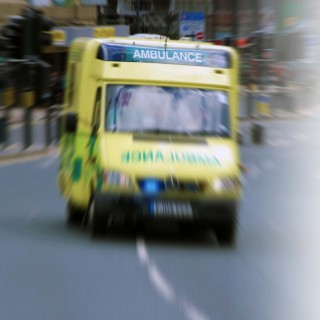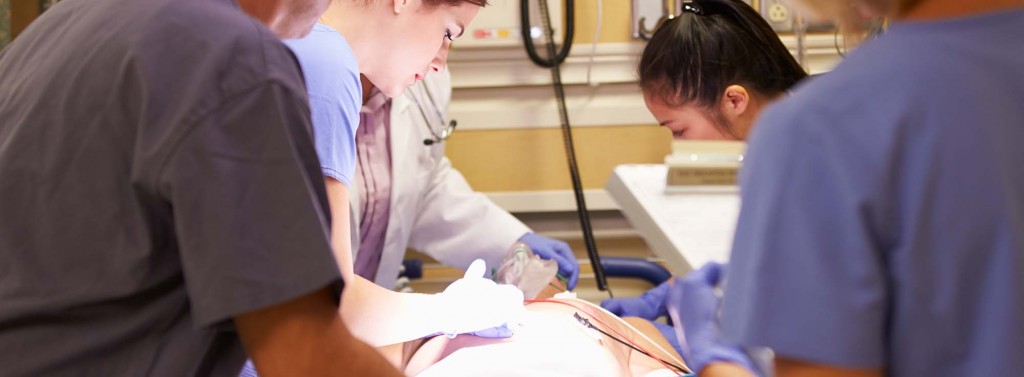
Winter is closing in and the additional pressures of the cold weather, viruses and flu will have an impact on all A&E departments across the UK.
In the lead up to last Christmas (2014), the country’s A&E units saw an unprecedented peak of 446,473 attendances and throughout the winter emergency departments came close to breaking point.
The winter strain on already busy, underfunded and short staffed emergency units inevitably lead to errors and missed diagnosis. A&E staff also need to communicate with often intoxicated patients (alcohol and drugs) or sometimes people with learning difficulties, which can lead to ‘missed’ conditions in a high pressure environment.
As the country heads into winter, we are warning of the top 10 conditions that can be missed in an overstretched and busy A&E department.
Spinal injury caused by compression – Cauda equina syndrome involves pressure and swelling on the nerves at the end of the spinal cord and can result in paralysis, double incontinence and other neurological and physical problems. There is a window of 24 to 48 hours in which surgery must take place to avoid permanent damage. The syndrome is extremely rare, and medical professionals often dismiss cauda equina and diagnose back pain.
Appendicitis – Appendicitis is a painful swelling of the appendix, a small pouch connected to the large intestine. If allowed to rupture it can cause a serious infection known as peritonitis, which is life-threatening. Classic symptoms including a stomach ache, fever and pains along one side of the body but the condition has been misdiagnosis as constipation, flu and stomach bug.
Heart attacks – Heart attacks happen when the blood supply to the heart muscle is severely reduced or stopped. Most heart attacks start slowly, with only mild pain or discomfort and symptoms are confused with indigestion, heartburn or a chest infection. Guidelines and procedures mean that it is unacceptable for a doctor or nurse to determine that the patient with chest pain is not having a heart attack and send them home.
Hip joint fracture – Fractured neck of femur is cracks or breaks at the top of the thigh bone close to the hip joint. Then can occur after physical trauma, usually a fall but can be caused by a history of long-distance running or simply a sudden increase in physical activity. Patients may only complain of vague hip, groin or knee pain but it can have a life changing effect on mobility if left untreated. Inexperienced medical professionals often misread X-rays and a full diagnosis often requires a CT or MRI scan.
Wrist fracture – Scaphoid fractures are usually caused by a fall on to an outstretched hand. The scaphoid bone is found in the hand around the area of the wrist. Standard X-rays may not pick up all scaphoid fractures and a CT or MRI scan may be required. If not recognised and treated, painful and debilitating complications can develop.
Hand injury – Flexor tendon injuries and nerve injuries in the hand are caused by a deep cut or if the finger are pulled violently so the tendons detach from the bone. A patient will experience tenderness, inflammation, swelling or numbness in the hand, and damaged tendons require emergency surgery within 24 hours for a successful recovery. A missed flexor injury or any delay may result in long term disability in the hand.
Brain bleed – A subarachnoid haemorrhage is a type of stroke caused by bleeding on the surface of the brain. It can lead to serious brain injuries and death. The main symptom is a sudden and painful headache. Other symptoms include a stiff neck, vomiting, light sensitivity, blurred or double vision, seizures or unconsciousness. If a patient shows signs of a suspected subarachnoid haemorrhage an urgent CT scan is required to check for bleeding around the brain.
Build-up of blood in the skull – Intracranial bleeds within the skull following a physical trauma – such as a traffic accident, fall or sport’s concussion – can be missed because they can occur after even minor head traumas. The build-up of blood from the ruptured blood vessels causes pressure on the brain tissue or limits its blood supply. The condition can result in a severe brain injury or death if not diagnosed quickly with a CT scan and treated.
Blood clot – A pulmonary embolism usually happens when a blood clot called a deep vein thrombosis (DVT), often in the leg, travels to the lungs and blocks a blood vessel. Usually associated with age and inactivity, a DVT needs careful diagnosis and lives can be saved if found early and treated properly.
Rupture of main blood vessel – An aortic aneurysms and an aortic dissection can lead to a rupture in the largest blood vessel in the body, the aorta. It carries blood from the heart to the major organs. If a rupture occurs, it is life threatening. Symptoms vary widely from limb paralysis to back and neck pain and the conditions are sometimes misdiagnosed as a stroke. A CT scan will reveal both conditions and emergency surgery is usually required.
The aftermath of clinical negligence can be devastating and expert support is necessary because clinical negligence is complicated. Compensation is important in cases of clinical negligence because it can help assist with rehabilitation, adaptations of the home and car, purchasing aids and equipment, care and assistance, cover loss of earnings, and private medical treatment.
Contact us on 0800 230 0573 to speak to our Clinical Negligence specialists.
